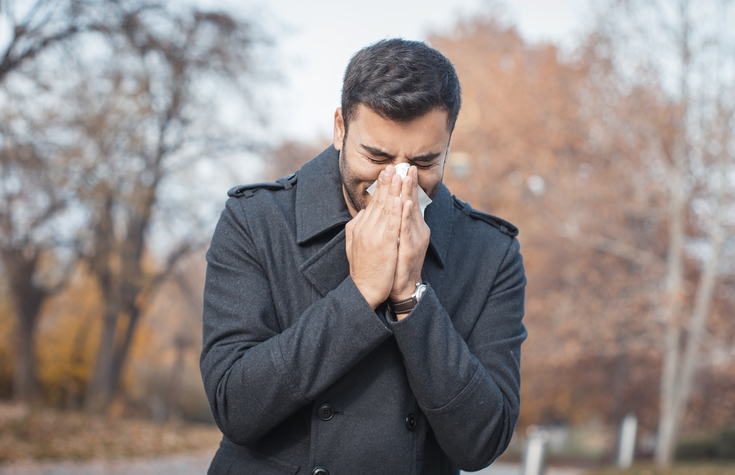
Fall allergies can be just as bothersome as spring allergies for many people. While we all enjoy the leaves changing color and a new season being ushered in, nature is shedding its outer layer and causing new allergens to float through the air. Allergy sufferers often find themselves with a tissue in their pocket waiting for the next sneeze. What allergens are common in the fall? It turns out, there are quite a few.
Ragweed Allergy
Ragweed season usually starts mid-August and lasts for several months until the temperature dips permanently. One plant can send up to one billion pollen grains flying through the air. If the summer months were particularly rainy leading up to the start of the season, ragweed pollen can be even more severe because the plants have had time to propagate. If ragweed is a concern for you, be sure to have an allergy air purifier in your home to keep allergens to a minimum.
Mold Spore Allergy
Mold spores begin to thrive in spring but stick around until cold temperatures set in again. They’re often found in the soil or in leaves that have fallen to the ground. Mold spores usually rise up into the air during the warming of the day and then fall back to the ground at night when it cools off. Unfortunately for allergy sufferers, spores are easily inhaled. Before mold spores take over your home, consider a mold air purifier to keep them at bay.
Goldenrod Allergy
Goldenrod plant is a beautiful, yellow, flowering plant that is often blamed for a lot of allergy problems. The National Wildlife Foundation, says this is a common misconception and that ragweed is usually behind an allergy sufferer’s sneezing and wheezing. The difference is that ragweed relies on the wind to carry its spores elsewhere, goldenrod relies on insects, making it usually less allergenic.
Sagebrush Allergy
Sagebrush flowers usually in mid-August through late September in the North-western part of the United States. Its pollen is light weight and easily floats through the air, landing in your nostrils if you breathe in. While you can’t do much about it outside of your home, running an air purifier inside your home can keep allergens to a minimum.
Suffering from Fall Allergies
Anyone who puts up with fall allergies year after year will admit that it isn’t pleasant. The touch football games and outdoor activities many of us look forward to in the fall are sneeze-inducing nightmares for people with allergies. Unfortunately, being indoors isn’t always a relief either. Pollen gets tracked inside on our shoes, clothing, and pets, making it difficult to breathe for some allergy sufferers. Home air purifiers can help remove pollen in our homes by consistently cleaning the air of allergens. If your home is a fortress of allergens, consider using an air purifier for the upcoming allergy season.
Shop This Post
